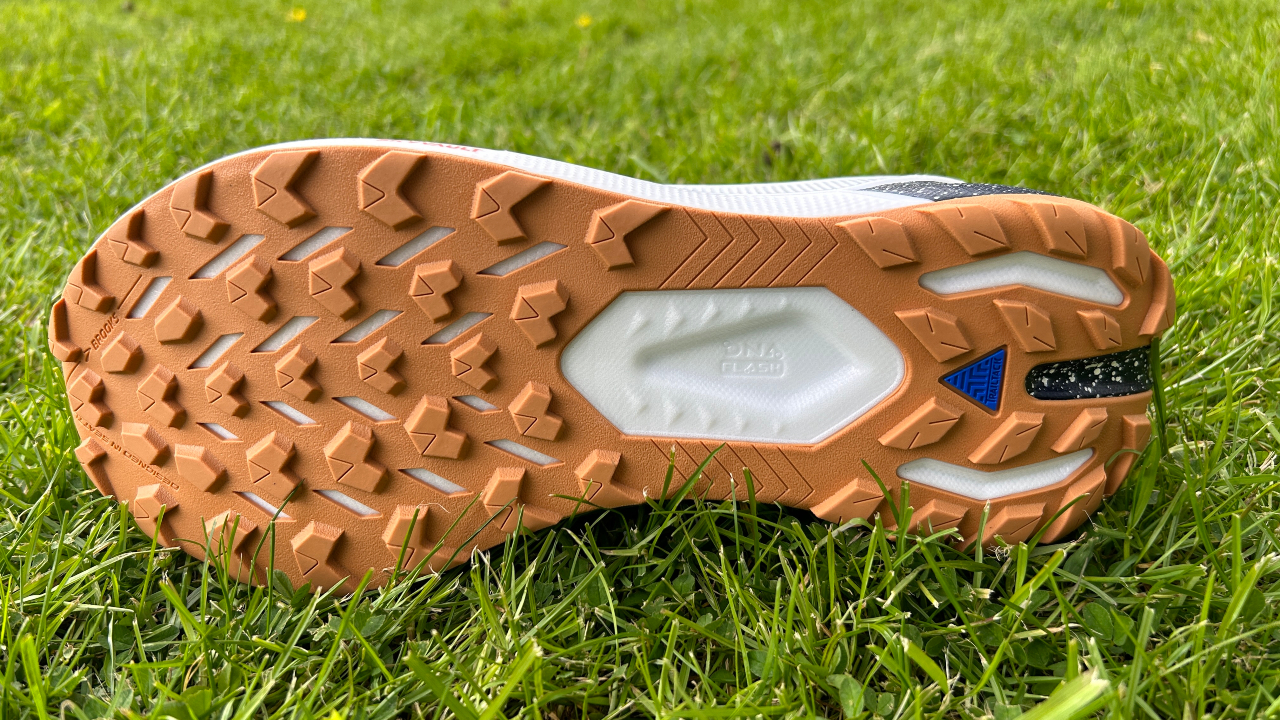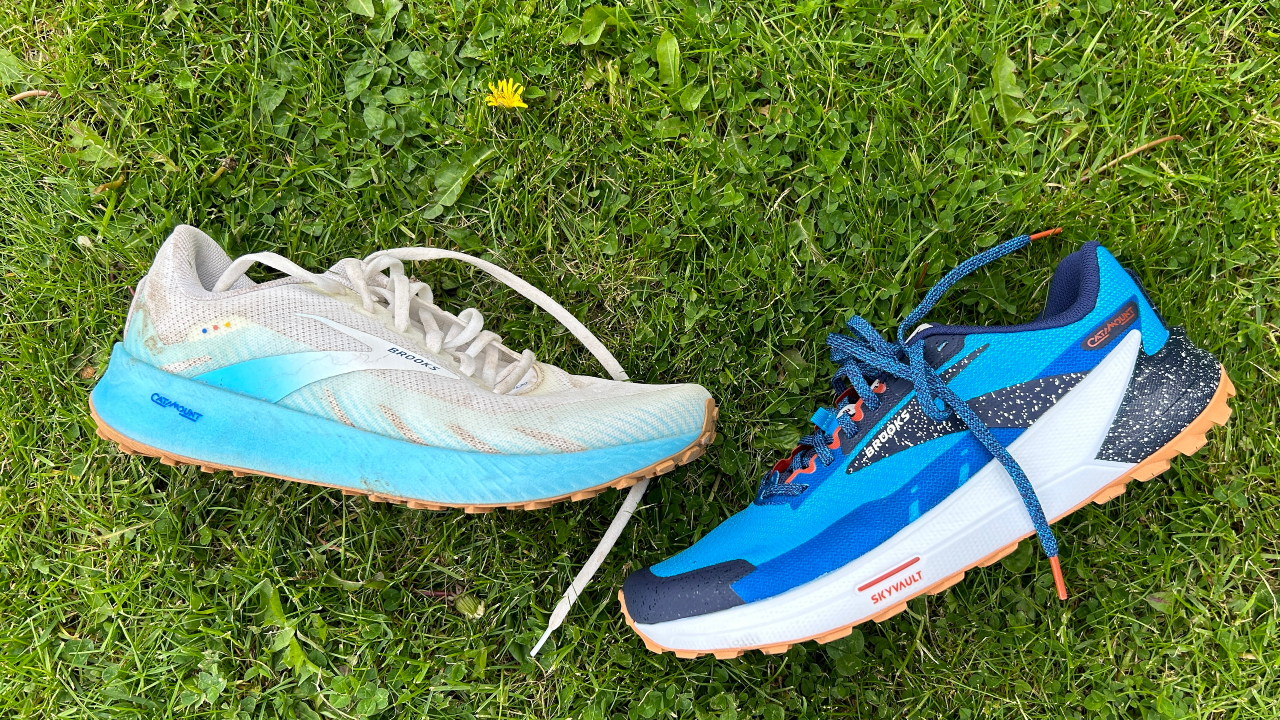Our Verdict
The Brooks Catamount 2 is a good shoe but it just isn’t light and propulsive enough to be a top racing option. It’s also too firm to be comfortable for long easy runs on the trails. On firm ground it is enjoyable to run in, though there are better options available—especially given its high price.
For
- Nitrogen-infused midsole
- Lightweight
- Attractive design
Against
- Outsole suited to firm ground only
- SkyVault plate not propulsive
- Expensive
You can trust Coach
The original Brooks Catamount was one of the first trail shoes I tested that used a nitrogen-infused midsole foam. It was a light and responsive shoe that felt like a road shoe with extra grip as a result, and one of the best trail-running shoes available.
That was in 2020. Since then many brands have started to use foams and tech from their road shoes in their trail-running options, including carbon plates in trail-racing shoes. The updates to the Brooks Catamount 2 improve the shoe, but they aren’t enough to make it stand out from the competition. It’s a great option for trail runs on firm ground—but there are more versatile and faster shoes available.
Brooks Catamount 2 Review: Price And Availability
The Brooks Catamount 2 launched in spring 2023 and costs $170 in the US and £160 in the UK. It’s expensive, and most of the trail shoes that cost more have carbon plates in the midsole. While the Catamount 2 might have a plate, it’s not a true trail super-shoe.
Design And Fit

The star feature on the Catamount 2 is the DNA Flash midsole. This is a nitrogen-infused EVA foam that Brooks also uses in its fastest road running shoes, like the Hyperion Max and Hyperion Elite 3. DNA Flash is not as soft as most foams used in super-shoes, but it’s light and responsive and its firmer feel is good for a trail shoe because it doesn't create an unstable ride.
The Catamount 2 has a 6mm drop, and although Brooks doesn’t give the stack height it looks to be around 30mm at the heel. It’s not as cushioned as some recently launched trail-racing shoes such as The North Face Summit Vectiv Pro and the Saucony Endorphin Edge.
Brooks has added a plate to the Catamount 2 and suggests this SkyVault plate—which is in the forefoot—adds pop to the ride, especially on uphills, while also offering protection from rocks. The mesh upper has a toe bumper and mudguard, and abrasion-resistant sections on the mesh to increase durability. There is a redesigned fit around the midfoot to create a more secure hold than the original shoe, which could feel loose when running on narrow, twisting tracks.
I found the fit of the Catamount 2 was perfect in my normal running shoe size. It isn’t the widest shoe, though. I have a narrow foot so this suited me well, but if you have a wide foot it may feel cramped in the midfoot.
Sign up for workout ideas, training advice, reviews of the latest gear and more.
At 9.7oz/277g in my US size 10 the Catamount 2 is pretty light for a trail shoe, if not an absolute featherweight. The TrailTack outsole is one reason it’s not too heavy, since the lugs are not that deep. The Catamount 2 grips well on firm ground, whether it’s wet or dry, but doesn’t have the bite for soft stuff.

How I Tested This Shoe
I’ve run around 25 miles (40km) in the Brooks Catamount 2, using it for a mix of slow and fast runs on firm forest paths. I also tested the original Brooks Catamount, and have reviewed a range of the best trail-running shoes from other brands.
Running Performance
I liked the original Catamount and used it a lot as a fast trail shoe for interval sessions and races, even picking up the win in the New Forest 10K in the shoe in 2020.
Since then, however, the trail shoe market has moved on, and even though the new Catamount 2 is lighter and has a plate, it doesn’t deliver the performance of much lighter trail racers like the Hoka Zinal 2, or plated shoes like the Saucony Endorphin Edge or Hoka Tecton X2.

I didn’t feel pop from the SkyVault plate in the Catamount 2, which I’m sure does a good job in protecting the foot like any other rock plate but isn’t going to deliver the punch you expect from a plate these days. The Catamount 2 is still a light and enjoyable shoe to use for faster runs, and a comfortable one for easy outings. I’d opt for a softer shoe to run long distances on the trails, but many runners will be happy with the level of protection.
It’s a good all-rounder on firm ground then, but at this price you might expect a racing shoe on a level with plated options and the Catamount 2 isn’t that. It’s also not that versatile in the terrain it can handle and, as someone who mostly runs in a British forest, there are long stretches of the year where it would be too muddy for the Catamount 2.
Is The Brooks Catamount 2 Worth It?

At its RRP it’s hard to recommend the Brooks Catamount 2. It’s too expensive for a shoe that isn’t as good as the best carbon plate trail-racing options or as versatile as trail all-rounders like the Saucony Xodus 2 or Hoka Speedgoat 5, which are great for a range of paces on soft and firm ground.
If you can grab it in a deal the Catamount 2 is a good shoe for firm trails, and lighter than most. If you loved the original Catamount then the second version is lighter and better while having a similar feel, so it is an upgrade. It’s just that, since the first Catamount appeared, other brands have been more active than Brooks in releasing impressive trail shoes.

Nick Harris-Fry is a journalist who has been covering health and fitness since 2015. Nick is an avid runner, covering 70-110km a week, which gives him ample opportunity to test a wide range of running shoes and running gear. He is also the chief tester for fitness trackers and running watches, treadmills and exercise bikes, and workout headphones.

